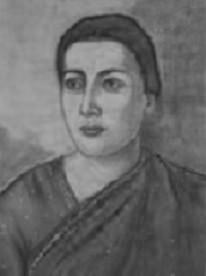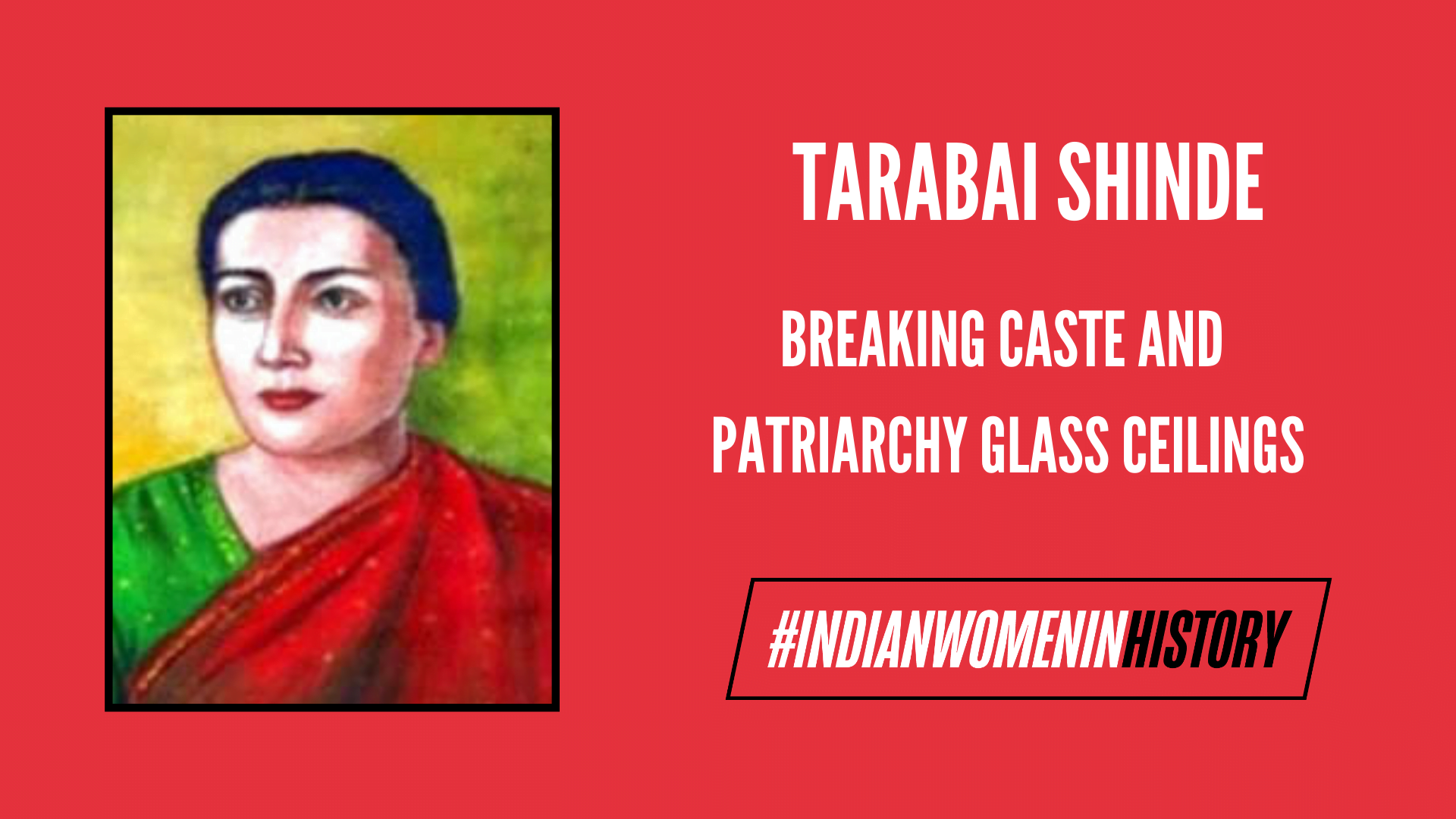“Let me ask you something, Gods! You are supposed to be omnipotent and freely accessible to all. You are said to be completely impartial. What does that mean? That you have never been known to be partial. But wasn’t it you who created both men and women? Then why did you grant happiness only to men and brand women with nothing but agony? Your will was done! But poor women have had to suffer for it down the ages.”
Excerpt from the Stri Purush Tulana (A Comparison Between Men and Women)
Remembering the past of feminism in India and attempting to insert oneself into its glorious history would lead one onto the path of a fiery, fierce feminist: Tarabai Shinde. The 19th century witnessed women in the Indian subcontinent having to resist forced widowhood, denial of education, forced marriage, sexual violence within and outside the family, and moralistic definitions of how they must behave both in the private and public sphere. In such a turbulent atmosphere, there was a heretic who dared to speak out against the oppressive structures. She was the harbinger of a revolution, one of the few women who dared to speak out against religion at a time when zealots were many and dissenters were few.
She is, as we know it, the first Indian feminist literary critic. Her exposé on the patriarchal setup and stereotypes women were subjected to appeared almost a century before Simone De Beavoir’s The Second Sex, the foundation stone for feminist discourse.
An Introduction

Tarabai Shinde (1850-1910) lived in obscurity as a member of the socially elite Marathi (warrior peasant community) caste in a small town called Buldhana in Maharashtra.
She was home-schooled by her father, Bapuji Hari Shinde, a radical, and head clerk in the office of the Deputy Commissioner of Revenues, who taught her Marathi, Sanskrit, and English. She was an avid reader, proficient in classical and modern literature, a fact that set her apart from the other women of her time. She married very young and was said to have quickly lost regard for marital life. But even in her marriage, she was different, for she had a form of marriage called gharjavai, where the husband came to live in her household, an unusual practice in the patriarchal society in which she lived where the woman must leave her household to live in her “new” house. She had no children, a choice she made actively and defended in the face of a society in which a childless married woman was a travesty. She tells us in her work that she spent her life in marathomal, the Marathi seclusion of women.
Her father’s association with the reformer Jotirao Phule contributed to her engagement with the reform movements of the time.
Her Struggles and Contributions
Tarabai was a compatriot of activists Jotirao and Savitribai Phule. She was a member of the Satyashodak Samaj (“Truth Finding Community”) organisation. The Phules started a school for lower-caste girls in 1848. In 1854, they started a shelter for upper-caste widows who were forbidden from marrying and ostracised from mainstream society. Later, they involved Tarabai in both these initiatives and groomed her in this area.
She received most of her experience through her work with Jotirao and Savitribai Phule who shared the same ideas of the oppression of gender and caste in Indian society
Tarabai raised awareness on the double-standards of men and women in society. She also discussed the unfair treatment of the different castes in the Indian society. This allowed citizens to begin to question the standards they have set for women.
Her Work
Tarabai asked the one question that fueled a fire in the hearts of women, one nobody dared to openly ask: “But do men not suffer from the same flaws that women are supposed to have?“
Tarabai wrote Stree Purush Tulana (A Comparison Between Men and Women), originally in Marathi, in response to the unfair treatment of women and religious prejudice that permeated society. It was her first and only published work.
There was a specific incident that fueled her: Vijayalakshmi in Surat, an upper-caste widow, was sentenced to death for having an abortion. After Surat’s death a series of articles were published in The Pune Vaibhar (a weekly known for its extremely orthodox and anti-reformist politics) insulting women for their, “new loose morals,” and portrayed the Indian woman as detestable. Tarabai wrote her book in response to this article to show Indian society that there are double-standards for men and women and that women deserve more rights. She claimed to be writing the 40-page prose to defend women’s honor, stating, “I’m doing it out of hope that you might stop treating all women as though they had committed a crime and making their lives a living hell for it.”
In her work, Tarabai implores the reader to consider the notion that men might not be the indestructible beings they put themselves out to be, but as flawed as they considered women. In a point by point note, she sets out the flaws women are said to have and refutes them. The quick-witted repartee exposes the males in society at that time for their hypocritical norms and argues for widow remarriage, the abolition of strict behavioral codes for women, and even criticizes the religions (then, Hinduism) that constricted women. At a time when adultery was considered the biggest sin a woman could commit, she shifts the blame onto the husband for not being able to keep his wife happy. Furthermore, she argues that women should have husbands of their choosing in order to prevent adultery.
In defending a widow’s right to remarry, she speaks of the atrocities committed against discarded widows and invokes religious scriptures to solidify her point. On remarriage, she notes that the shastras allowed for a queen to choose a rishi of her own liking to beget a child with upon the death of her husband. A charge against women that she vehemently argues against is their supposed transgressions: she tries to reason out the need to end child marriages and caste/income based marriages. In blatantly calling out the patriarchy for what it is, she is unapologetic in breaking “standards” of womanhood.
Viewing this work in the context of her social milieu, Tarabai was not only a courageous heretic but also an analytical thinker who could look beyond the prejudice that existed and formulate reasoned notions for change. She was blatant in her allegations against the men around her, causing quite the stir when she published her piece.
Importantly, Tarabai was also a satirical writer who engaged with irony and travesty to explicate her arguments. Her language is robust, powerful, and biting.
Struggle
Immediately following the publication of her work, the local newspapers ran articles that condemned Tarabai and went so far as to ridicule her work. These diatribes are said to have silenced her, for she published no other works. It was not until Jotirao Phule’s Stasar (1882) made a reference to her work that it was resurrected once more. Phule suggested that the sharp criticism leveled at her was owing to the fact that the very men she condemned were the ones publishing the newspapers.
Remembrance is Resistance
Invoking Tarabai from the sands of time is important in understanding how the counter-model for womanhood was constructed by her juxtaposing the norms that were pre-existent. Her text is the first full-fledged extant feminist argument after the poetry of the Bhakti period. At a time when intellectuals and activists were primarily concerned with easily identified/ostensible atrocities against women, she isolated problems and broadened the scope of analysis to include the entire ideological fabric of the patriarchal society. Women everywhere, she implored, are similarly oppressed.
She refused to accept the superiority of men in gender relation and was extremely pragmatic in admitting that women did have faults, but none that made them inferior to men.
In destroying the several charges leveled against women to deem them immoral creatures who must be controlled, Tarabai struck one of the earliest notes of revolt.
References
- Tiffany K. Wayne, Feminist Writings from Ancient Times to the Modern World: A Global Sourcebook and History
- Tarabai Shinde: Resume
- Women Writing in India: 600 B.C. to the Early Twentieth Century (CV)
- Images of Women in Maharashtrian Society (205-207)
- Tarabai Shinder’s ‘A Comparison of Men and Women’: A Milestone in Indian Feminism
About the author(s)
Shilpa Prasad is a law student who loves books, poetry and her guitar.





“Stri-Purush Yulana”was published in 1882,by Shivaji Mudranalaya,Pune.